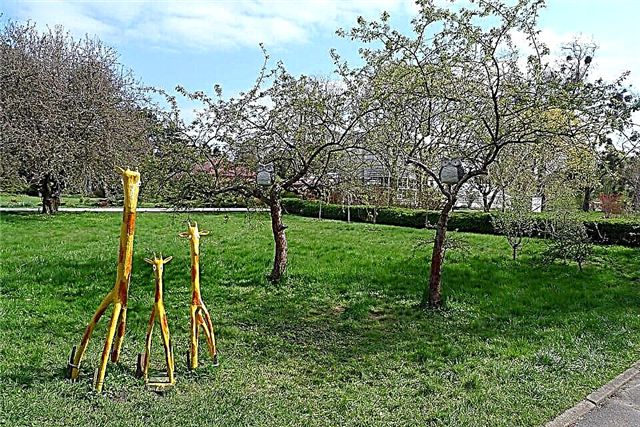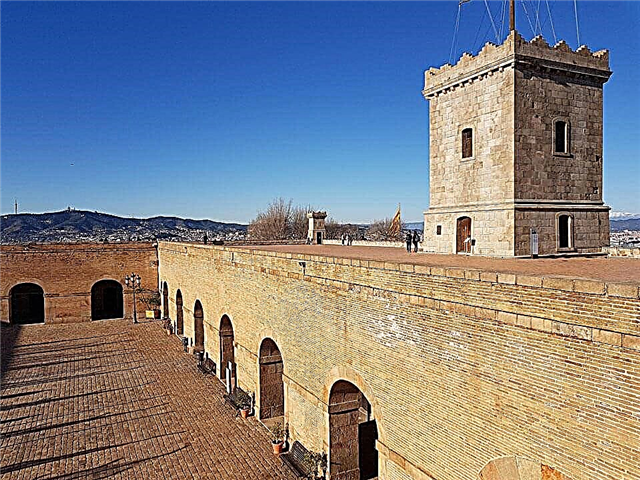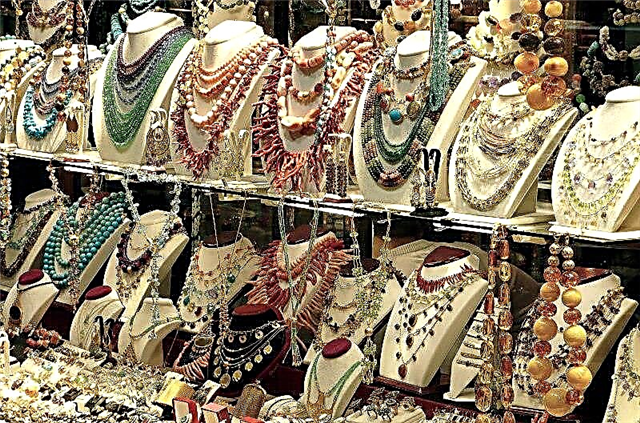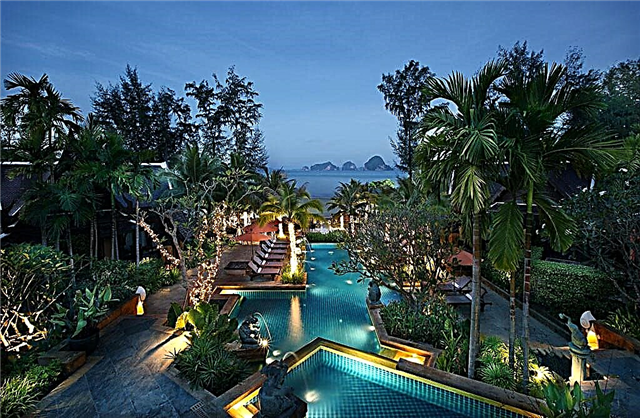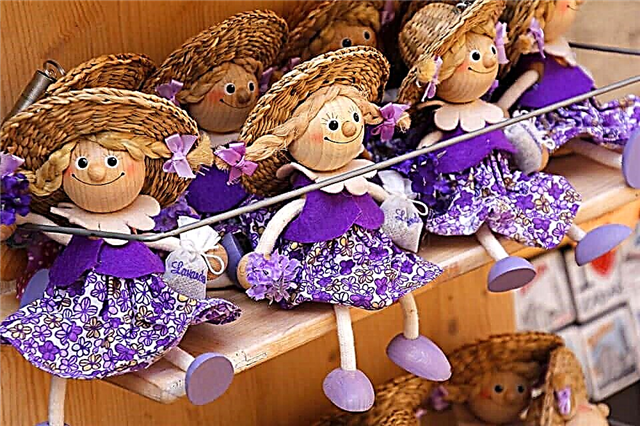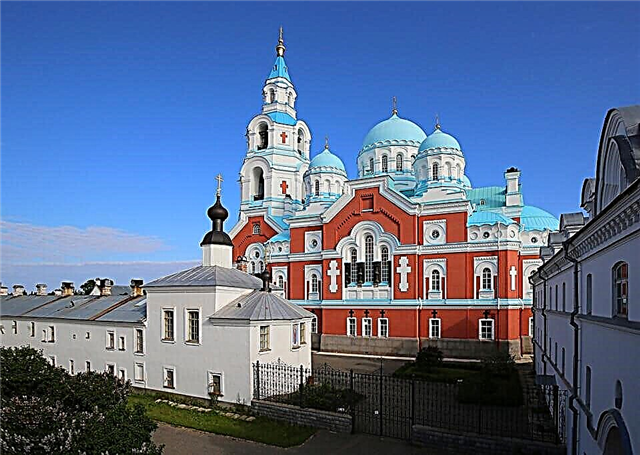Picturesque landscapes of the magnificent northern nature of the Republic of Karelia, washed by the endless blue Lake Ladoga, attract tourists from all over the world. A particularly impressive spiritual and cult place, saturated with an inexhaustible source of faith, is the island of Valaam. This is truly a holy and beautiful land with a long history, where one of the main Orthodox shrines of Russia is located - the Valaam Monastery.
The mighty rocky shores of the island, covered with tall pines and firs, rise above the surface of the water like the walls of impregnable fortresses. The blessed silence, barely broken by the bell ringing and chirping of birds, clean coniferous air and the diversity of the flora of the local area create an atmosphere of tranquility.
The land chosen by monks warmly welcomes guests and pilgrims seeking to find peace of mind and receive blessings. Having learned how to get to Valaam on their own, tourists tend to visit the ensemble of Orthodox architecture, located in the middle of an endless protected forest.
Where is Balaam

Valaam Island is part of the archipelago of the same name, located on Lake Ladoga, 20 kilometers from the mainland. The territory of the reserve is part of the Sortavalsky district of the Republic of Karelia. Numerous huge stone capes, covered with spruce forest, form beautiful bays, bays, straits and inland lakes.
Continuous rows of majestic and thin pines with lush crowns, as well as ridges of smooth boulders, silently greet the passenger and monastery ships docking to the shore. There is a water connection between the island and the nearest settlements, which are Sortavala and Priozersk. Also cruise water routes from the Northern capital of Russia - St. Petersburg are made here.
Tourist boat cruise

In St. Petersburg, many travel agencies organize special river trips to Valaam. A fascinating journey is carried out on comfortable motor ships. This is one of the most optimal and convenient ways to reach the reserve.
A group of tourists will be safely transported to the island, where they will be accompanied by professional guides. The tour program includes accommodation in a cabin, meals, a full range of services on board the ship and an educational excursion walking tour of Orthodox holy places with detailed sightseeing.
During the trip, three-deck and four-deck motor ships cover a distance of 200 kilometers in one direction. They are not fast. On average, the journey takes 11 hours.
Tourists wishing to enjoy the views of the delightful pristine nature, temple complexes and cultural monuments can choose an acceptable length of stay in the holy land. There are both one-day and weekly tours.
Ride on a water meteor

From the piers of Sortavala and Priozersk, as well as from St. Petersburg, high-speed missile boats "Meteora" are regularly sent. Passenger water transport reaches the pier in the Monastyrskaya Bay of the island in a few hours.
The hydrofoil vessel with a comfortable and cozy cabin can accommodate 120 passengers. Tickets are purchased from the captain directly upon boarding. Conditions for favorable navigation on Lake Ladoga directly depend on weather conditions. Often the planned trip is postponed for some time due to the storm.
We recommend reading what to see in St. Petersburg:
To Valaam from Sortavala

The settlement of Sortavala is located 40 kilometers from the island of Valaam. The water journey starts from the city pier, from here all ships go to the sacred archipelago. A modern boat "Meteor" operates to Valaam at 9:00 and 11:00 hours.
During the summer, a high-speed boat runs every day. The boat leaves the island at 15:00 and 17:00. The schedule is not very convenient for travelers, since there is little time left to see all the shrines and attractions. One way trip takes about one hour.
An independent tourist should remember that tickets for the Meteor may not be available, since some of them are bought in advance by excursion companies for their groups. Other motor ships also depart from Sortavala to the island from 9:00 to 12:00.
There is no specific departure timetable, but there should be no problems with sailing. A sufficient number of ships are lined up at the pier, so there will be enough places for everyone. The disadvantages of this type of service include the low speed of boats, which, as a result, can cover a short distance within 2.5 hours.
To Priozersk from St. Petersburg

The small town of Priozersk, located in the Leningrad region on the shores of Lake Ladoga, is adjacent to the Republic of Karelia. Most tourists come here to visit Valaam Island. Passenger ships regularly depart from the pier to the archipelago.
Priozersk is located 160 kilometers from St. Petersburg. For independent tourists, it will not be difficult to first get to this original place, and then make an exciting river trip to the fertile places of the monastery.
The developed transport infrastructure allows you to get to Priozersk by rail, as well as by bus and car.
By train

Every day, electric trains No. 6582 and No. 6516 leave from Finland Station to Priozersk. The travel time will take more than two hours. The tedious ride on hard benches in an overcrowded carriage is fully compensated by the picturesque scenery passing through the windows of the electric train. The railway track is laid among the magnificent forest area.
By bus

You can get from St. Petersburg to Priozersk safely and comfortably by bus. Transport departs from the Northern Bus Station, located next to the Devyatkino station.
Bus # 859 runs hourly from early morning until 20:30. Travel time will take about three hours. Passengers buy tickets at the ticket offices of the bus station. Modern buses run along the route, equipped with spacious cabins with comfortable seats.
By train

The suburban passenger train, like the electric train, leaves for Priozersk from the Finlyandsky railway station in St. Petersburg. According to the route sheet, the train travels a short distance to the destination in two hours.
There are carriages with seating places, which makes it possible not to purchase expensive compartment tickets. Trains run on Wednesdays and Fridays. The trip will give passengers a lot of positive emotions, as the road passes through dense forests, crossing river valleys.
By car

Self-organized tourists who want to enjoy a calm and secluded trip, as well as not depend on the schedule of public transport, can quickly and comfortably get to Priozersk by car. A good quality road surface has been laid from St. Petersburg to the shores of Lake Ladoga.
In order not to get into heavy traffic, it is better to go on a trip early in the morning or in the evening. During these hours, the highway is practically unloaded. On average, the journey will take about two hours. The route passes through picturesque villages surrounded by forests and rivers.
Pilgrimage Tours

Regular pilgrimage tours are organized to the unique island of Valaam, whose religious significance is known throughout the world. Orthodox Christians visit the monastery with the aim of worshiping church relics, learning the essence of human existence and gaining peace of mind.
The remote island from the bustle of the world attracts parishioners with the grandeur of a variety of wildlife. Among the protected area, there are numerous shrines, which are the most valuable architectural monuments and symbols of Orthodoxy for every believer.
The Valaam Monastery is subordinate to the Moscow Patriarch and All Russia. The temple complex, combined with enchanting forest expanses, encourages even the most distant from religion tourists to think about the moral, ethical and spiritual values of human civilization.
The main constant stream of guests is observed from May to September. Pilgrimage tours include religious services from various dioceses, as well as a warm welcome to the island's guests.
Visitors to the island of Valaam have the opportunity to find answers to the most intimate personal questions, to touch the relics of saints to strengthen their faith, to rest their soul and body from the bustle of the city, to receive blessings and hope for healing.
Believers pray earnestly in sincere repentance. At the end of the service, guests can familiarize themselves with the conditions of the monastery life, as well as learn the history of the monastery since its inception. Pilgrims stay in special hotels located on the territory of the monastery.
Tips for visiting the island

When planning a visit to the reserved monastery, tourists are advised to allocate as much time as possible for this trip in order to maximize the amazingly beautiful landscapes. Pilgrimage places, covered with the Orthodox spirit, leave indelible impressions.
The island of Valaam is flanked by water on all sides, which as a result creates a special microclimate. You should take warm clothes and closed shoes with you. Tourists need to pay attention to their clothes.
It is strictly forbidden to enter the temples in shorts, T-shirts, tracksuits and elegant dresses. The fair sex is allowed to enter the church only in long skirts. In this case, the head should be covered with a scarf. Men, on the other hand, need to take off their headwear when entering a religious building.
Attractions of Valaam

The main attraction of Valaam is the delightful architectural ensemble of the ancient monastery, surrounded by lush and blooming thickets of vegetation. The beauty and grandeur of the temple complex evoke feelings of admiration and delight among the parishioners.
The harmonious combination of the temple complex with the surrounding pristine nature of Valaam is striking. The first buildings of the Valaam Monastery were erected at the turn of the XIII-XIV centuries. Over the long history of its existence, the monastery served as a defensive fortress and a place of exile for clergy.
The ancient buildings of the monastery have repeatedly suffered from fires, were destroyed and plunged into the abyss of oblivion for many decades. The main years of flourishing of the religious center fell on the 19th century, when Father Damascene was the abbot of the monastery.
Under his leadership, numerous chapels and various church buildings were erected, roads were laid, and water supply was laid. On the territory of the reserve, garden and vegetable garden plots were broken. Craftsmen's workshops, pharmacies, hospitals and bakeries also appeared.
In fact, a monastic state arose on the island of Valaam, in which only brothers-monks worked and lived. There were more than 1000 of them. On a rocky island, hardworking monks have learned to grow vegetables and even fruits.
For the development of horticulture, tons of fertile soil were imported to the island from the nearby mainland lands. Today, guests of the island can see the most valuable architectural monuments, a complex of chapels and other unique structures.
A pleasant walk along well-groomed alleys with deciduous, coniferous and fruit trees will complement the impressions of the blessed visit to the shrines.
Valaam Spaso-Priobrazhensky Monastery

One of the main attractions of the island is the Spaso-Preobrazhensky monastery, highly revered throughout the Orthodox world. The architectural complex at that time was the main citadel of Northwestern Russia. The monastery was founded by people from Novgorod at the beginning of the XIV century.
Difficult years fell on the share of the first buildings. Chosen for the founding of a religious center, the island was in dangerously close proximity to the enemies of the Russians. The monastery in different eras was several times subjected to barbaric raids from the Swedes, became a war zone, was part of different states and was in desolation.
The Valaam monastery is a unique ensemble of various utility and residential buildings, built in the form of two closed concentric quadrangles. The outer square is intended for the residence of lay novices, and the monks live in the inner buildings.
Temples and small chapels reflect the richness of classical Russian Orthodox architecture. The central composition of the monastery is the grandiose Transfiguration Cathedral.
Church-Archaeological and Natural Museum-Reserve

In 1979, on the islands of the Valaam archipelago, a research natural museum-reserve was founded. The institution amazes with the presence of a rich collection of the most valuable exhibits, the number of which is more than 5000 items of various trends.
These are works of painting and graphics, arts and crafts, church utensils, icons, books, old coins, products of local artisans, old tools, clothing and numerous monastic household items.
The main property of the museum is expositions reflecting the history of the Valaam Monastery. The basis of the museum fund is an extensive collection of copper casting, fragments of red clay and white clay dishes, as well as samples of building materials.
Holy Vladimir Skete of the Valaam Monastery

The most modern building of the entire architectural ensemble of the island is the Svyato-Vladimirsky skete. The building was erected in 2002 and is the residence of His Holiness Patriarch of Moscow and All Russia.
Separate cells are collected into a single whole building, the appearance of which embodies the ideas of traditional elements of Pskov architecture of the 15th century. The beautiful white-stone facade of the complex is decorated with domes, arched window openings, graceful subtle elements of ornamentation, ceramic paintings and carved pediments.
Fraternal cells, an icon-painting workshop, a refectory, a library and utility rooms are located in the skete.
Resurrection Red Skete

On a high hill, where, according to legend, the Apostle Andrew the Primordial established a stone cross, the Resurrection Red Skete rises. The massive red brick buildings were laid at the beginning of the 20th century. Most of the tourist routes start from this architectural ensemble.
Nearby there is a picturesque bay where cruise ships and boats dock. Behind a brick fence with a beautiful figured gate is a well-groomed green area with neat paths lined with paving stones. Among the abundance of trees, shrubs, flower beds, there are one-story and two-story cell rooms, as well as outbuildings.
The central composition of the Red Skete is the temple, the architecture of which combines elements of the Byzantine and classical Russian styles. The church with a bell tower is crowned with two turquoise domes.A porch with columns connected by arches serves as a passage to the upper, magnificently decorated, light room.
Noteworthy is the two-tiered porcelain iconostasis with gilding. The colorful and delicate artistic work of the icon painters is impressive. Below the magnificent hall is the lower chapel, where one of the most valuable Christian relics is kept - a part of the crypt where the body of Jesus Christ rested.
Gethsemane skete

Many objects of the Valaam Monastery are named after sacred sites located in Israel and Jerusalem. So the island has its own Mount of Olives, at the foot of which there is the Gethsemane skete. This is a golden-yellow wooden church of the Assumption of the Virgin with blue domes and roofs, as well as two small outbuildings with a well-groomed garden. The exterior of the chapel is decorated with fine fine wood carvings.
The structure is crowned with blue onion domes and two octagonal tents. Window openings are framed with decorative platbands. A two-tiered bell tower adjoins the western part of the temple. The interior decoration of the shrine expresses the ascetic and modest lifestyle of novices.
There are no luxurious wall paintings and gilded images of saints. A small iconostasis, framed by graceful wooden ornamentation, will stand out. The main altar looks harmonious against the background of the walls painted in blue.
Nikolsky skete

One of the most picturesque hermitages of the Valaam Monastery rises on the small Nikolsky Island. It is located at the entrance to the bay where steamers and boats arrive. When ships pass between the rocky shores of the Ladoga Lake archipelago, passengers can see an amazingly beautiful temple erected in the middle of the 19th century to the left along the course.
Since olden times Nikolsky Island served as a monastery customs point, where all ship cargoes were carefully checked. The import of tobacco and alcohol into the sacred monastery was strictly prohibited, therefore, the inspection of goods was a mandatory procedure.
On a hill among the lush crowns of tall trees, a stone tent-roofed church dedicated to St. Nicholas the Wonderworker rises upward. From the inside, the walls and dome of the shrine are faced with magnificent frescoes. Oil-wax paintings, made in gentle light colors, depict the history of the life of St. Nicholas. Next to the church there are cell buildings, surrounded by an apple orchard.
Skete of All Saints
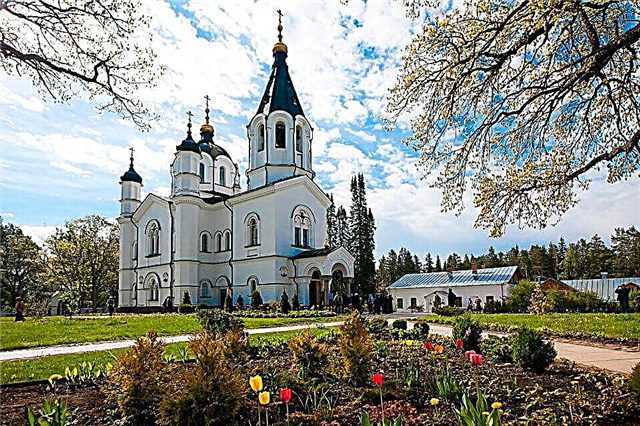
The largest architectural complex of the island of Valaam is the skete of All Saints. A white-stone church and six novices' cell buildings were erected in the 18th century. This is the strictest skete of the monastery.
You can visit its territory only with the permission and blessing of the abbot of the monastery. It will be very difficult for tourists of a different faith to get here and most likely impossible. The hermitage's courtyard is framed by powerful fortress walls with corner towers.
The temple of All Saints dominates over the picturesque place. The white-stone church reflects in its appearance the features of traditional Old Russian and Byzantine architecture. The five-domed bell tower and the domed drums, decorated with arched openings, give the building a special solemnity.
The interior decoration of the church is shaking. In the main hall with a vaulted ceiling, colorful 19th century wall paintings depicting apostles and angels are carefully preserved. The small iconostasis is decorated with openwork wooden ornamental elements.
To the south of the temple there is a well with cold clean water. Its depth is about 5 meters. Large cell buildings lined the perimeter of the skete. The pleasant surroundings of the area are created by green spaces and tall trees.
Transfiguration Cathedral

The gem and the main architectural composition of the Valaam archipelago is the Transfiguration Cathedral. This is the most visited place by pilgrims and tourists. The magnificent two-story temple, which is an elongated rectangle with three naves, was erected in 1896. Its height is 42 meters.
The graceful beauty of the five spherical domes of sky-blue color, set on massive white-stone drums with arched ends, amazes the eyes of the guests of the monastery. The facade of the church impresses with a harmonious combination of white, bright red and pale blue shades. A three-tiered bell tower, crowned with a pointed spire, stands out.
The Holy Transfiguration Cathedral contains the relics of the holy fathers Sergius and German, who founded the Valaam monastery. The halls of the temple, separated by high arched arcades, are richly painted and decorated with exquisite stucco moldings.
The walls, columns and ceilings are covered with vivid images of the faces of saints, apostles and angels. Noteworthy is the four-tiered carved iconostasis, framed with gilded ornaments.
Konevsky Abbey Skete

On the shore of the lake, in a forest thicket, the Konevsky skete is located comfortably and separately, in which the future abbot of the Valaam monastery, Father Damascene, first lived. Of all the numerous church buildings on the island, this is the smallest structure. The central decoration of the hermitage is a small, modest wooden chapel with two small domes.
The temple was consecrated in the name of the icon of the Konevskaya Mother of God. An excursion tourist route has been laid in the vicinity of the skete. The area is conducive to a pleasant scenic walk. The majestic larch trees, the surface of the lake, water lilies and ecological cleanliness can win the hearts and souls of tourists who have visited Valaam.


